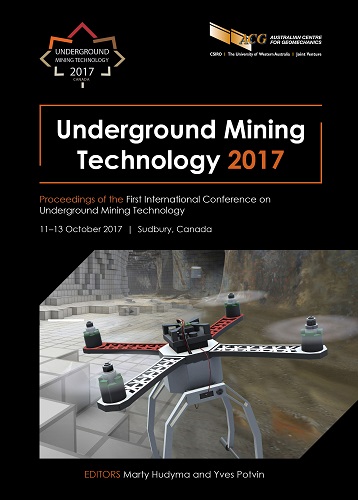Conventional and advanced borehole investigation methods for inaccessible underground voids

|
Authors: Pak, M; Preston, RP; Groccia, C; Taylor, J |
DOI https://doi.org/10.36487/ACG_rep/1710_36_Pak
Cite As:
Pak, M, Preston, RP, Groccia, C & Taylor, J 2017, 'Conventional and advanced borehole investigation methods for inaccessible underground voids', in M Hudyma & Y Potvin (eds), UMT 2017: Proceedings of the First International Conference on Underground Mining Technology, Australian Centre for Geomechanics, Perth, pp. 457-465, https://doi.org/10.36487/ACG_rep/1710_36_Pak
Abstract:
Determining mitigation and remediation options for underground voids, such as those associated with active or abandoned underground mine development openings and mined out stopes, can be difficult due to limitations of safe access, flooding, and void geometry uncertainty. Recent advances and improved technology associated with borehole investigation methods are making the job easier and more cost-effective. Specialised cameras used to conduct investigative surveys through boreholes have been applied to solve such problems for many years. Recent advances in electronics, digital cameras, and low-cost production have allowed for a wider use of the technology. Other borehole-based tools such as cavity monitoring systems/LIDAR for dry voids, and borehole-based sonar for flooded voids can be used in conjunction with borehole camera surveying to maximise the data that can be collected through expensive boreholes. These methods greatly reduce uncertainty by providing high-resolution scaled models of the intersected void. The ability to collect an enhanced dataset for a small incremental cost, relative to the cost of drilling, improves the cost benefit by reducing uncertainty. The benefits and challenges associated with each borehole investigation method, as well as considerations for optimising the quality of data collected, are discussed using examples from Giant Mine in the Northwest Territories, Canada and the Kam Kotia Mine and the Mine N claim in Ontario, Canada.
Keywords: borehole investigation, cavity monitoring system, sonar scanner
References:
Allegheny Instruments, Inc. 2016, GeoVISION Borehole Video System, Allegheny Instruments, Inc., Monterey, viewed 13 July 2017,
Imagenex Technology Corp. 2016, Imagenex 881A, Imagenex Technology Corp., Port Coquitlam, viewed 24 July 2017,
Renishaw plc 2017, Cavity Auto-scanning Laser System, Renishaw plc, Gloucestershire, viewed 13 July 2017,
© Copyright 2026, Australian Centre for Geomechanics (ACG), The University of Western Australia. All rights reserved.
View copyright/legal information
Please direct any queries or error reports to repository-acg@uwa.edu.au
View copyright/legal information
Please direct any queries or error reports to repository-acg@uwa.edu.au